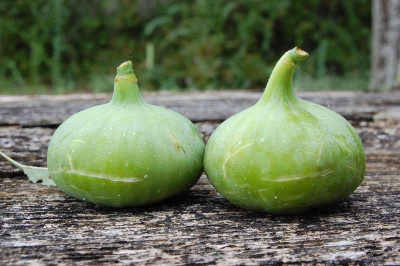︎︎︎ FICO ASINACCIO

La pianta madre è stata ritrovata nel comune di Città di Castello (PG), non se ne trovano altre. La pianta è di statura e vigoria media, con chioma aperta. Rustico, viene riprodotto tradizionalmente da pollone. La foglia è generalmente trilobata. Varietà bifera, I pochi fioroni sono globosi, senza collo, i forniti invece hanno la buccia sottile di un bel colore verde intenso, con molte fenditure a maturità; è di pezzatura media, con forma piriforme appiattita e un caratteristico collo lungoo , l’ostiolo è semichiuso. La polpa è rosa intenso , piena, non troppo succosa, con acheni mediamente grossi. I forniti maturano tra la fine di agosto e metà settembre. Sono molto adatti sia al consumo fresco che all’essiccazione, per la buccia fine, ma anche per la sciroppatura tal quale e la confettura, magari aromatizzata con anice o timo.
The mother plant was found in the municipality of Città di Castello (PG), there are no others. The plant is of medium height and vigor, with open foliage. Rustic, is traditionally reproduced by sucker. The leaf is generally three-lobed. Variety that flowers twice a year. The few early fruits are globose, without neck, the later fruits instead have a thin skin of a beautiful intense green color, with many cracks when ripe; it is medium in size, with a flattened pyriform shape and a characteristic long neck, the ostiole is semi-closed. The pulp is deep pink, full, not too juicy, with medium large achenes. The products ripen between the end of August and mid-September. They are very suitable both for fresh consumption and for drying, for the thin skin, but also for the syrup as it is and the jam, perhaps flavored with anise or thyme.